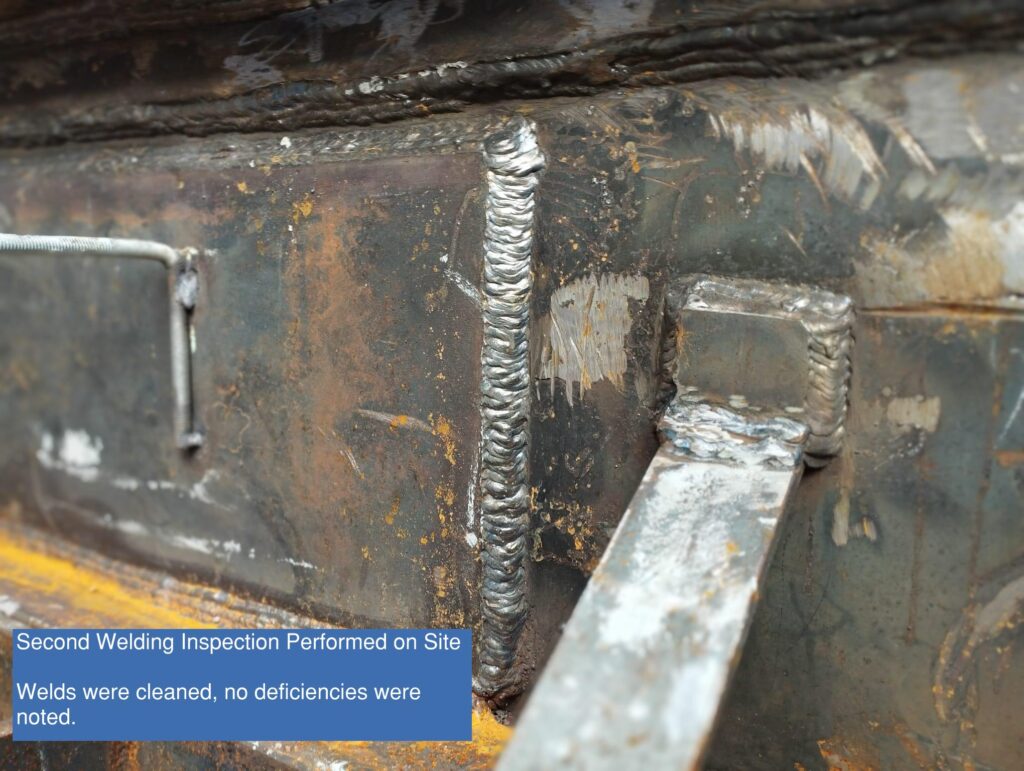Vital Tips for Effective Welding Inspection Racine Services
Vital Tips for Effective Welding Inspection Racine Services
Blog Article
Cutting-edge Approaches to Fillet Weld Inspection and Testing: Enhancing Weld Quality and Compliance Requirements
In the realm of welding, the top quality and honesty of fillet welds play a vital duty in making certain the architectural sturdiness and integrity of numerous industrial elements. With the continuous drive for improved efficiency and conformity with strict standards, the expedition of cutting-edge approaches to fillet weld inspection and screening has actually ended up being critical. As sectors progress, the standard techniques may no longer be adequate in fulfilling the demands of modern welding applications. By welcoming sophisticated innovations and approaches, a new horizon of opportunities emerges in the realm of weld top quality evaluation and adherence to compliance criteria.
Advanced Non-Destructive Testing Techniques
Utilizing advanced technologies, progressed non-destructive testing approaches play an important duty in guaranteeing the honesty and quality of fillet welds. These techniques, such as phased array ultrasonic testing (PAUT) and magnetic fragment testing (MPT), offer thorough insights into the weld's inner framework without causing any type of damages to the material. PAUT, for instance, utilizes several ultrasonic components to inspect the weld from different angles, giving a thorough visualization of potential problems like absence of blend or cracks.
Likewise, MPT is reliable in spotting surface-breaking flaws by using an electromagnetic field and iron particles to the weld area. This technique is especially beneficial for determining gaps that might endanger the weld's strength. By employing these advanced non-destructive testing methods, weld examiners can precisely examine the high quality of fillet welds, guaranteeing compliance with sector standards and guidelines. The capability to find imperfections early on not only enhances weld high quality however likewise stops expensive rework or failures in structural integrity, underlining the significance of these cutting-edge testing strategies in welding inspections.
Robotics and Automation in Assessment
The integration of robotics and automation has actually reinvented the inspection procedure for fillet welds, improving performance and accuracy in quality evaluation. Robotics provide precise control and repeatability in inspecting welds, making certain constant and dependable results. Automated systems can be configured to follow certain inspection courses, making sure comprehensive insurance coverage of welds and decreasing the threat of human error.
Robotic examination systems geared up with innovative sensors can detect and determine weld attributes with high precision, supplying detailed data for evaluation. These systems can identify problems such as splits, absence of combination, and porosity, allowing punctual corrective activities to be taken. Furthermore, robotics and automation permit real-time data collection and analysis, giving prompt comments to drivers and facilitating fast decision-making processes.
Moreover, the usage of robotics and automation in fillet weld inspection enhances total performance by decreasing assessment times and raising inspection throughput. By streamlining the evaluation process, makers can make sure weld top quality and conformity standards are met efficiently, eventually resulting in cost savings and improved product quality.
Utilizing Artificial Intelligence for Analysis
Expert system plays a pivotal role in enhancing the performance and precision of evaluation in fillet weld assessment procedures. By taking advantage of the power of AI, inspectors can streamline the evaluation of weld quality and compliance requirements, causing much more trustworthy and accurate results. AI algorithms can rapidly refine substantial quantities of data from weld inspections, detecting issues or incongruities that might be testing to understand the naked eye. This advanced modern technology allows real-time monitoring of weld top quality, permitting immediate corrective activities to be taken if any type of problems are spotted.
In addition, AI systems can gain from past examination data, constantly boosting their her explanation ability to determine possible defects and variances in fillet welds. This flexible learning capability improves the total top quality control process, decreasing the probability of human mistake and making sure that welds meet the required standards. By integrating expert system right into fillet weld evaluation, sectors can achieve higher levels of efficiency, uniformity, and conformity in their inspection practices.
Portable Tools for On-Site Evaluation
 Enhancing area examination efficiency, the adoption of portable devices transforms on-site evaluation processes for fillet welds. These tools provide versatility and comfort, allowing examiners to perform comprehensive assessments in various areas, including challenging or remote environments. Portable tools such as ultrasonic testing gadgets, magnetic bit assessment devices, and digital radiography systems offer real-time data and high-resolution imaging abilities, allowing quick decision-making and immediate feedback on weld top quality.
Enhancing area examination efficiency, the adoption of portable devices transforms on-site evaluation processes for fillet welds. These tools provide versatility and comfort, allowing examiners to perform comprehensive assessments in various areas, including challenging or remote environments. Portable tools such as ultrasonic testing gadgets, magnetic bit assessment devices, and digital radiography systems offer real-time data and high-resolution imaging abilities, allowing quick decision-making and immediate feedback on weld top quality.One substantial advantage of portable devices is their capacity to simplify evaluation procedures, decreasing downtime and enhancing total performance. Examiners can quickly transfer these tools to various task sites, getting rid of the requirement for transporting heavy equipment or elements to off-site facilities. Additionally, the transportability of these devices promotes cost-effectiveness by lessening transportation expenditures and increasing evaluation timelines.
Furthermore, the use of mobile tools for on-site examination promotes positive quality control actions, as inspectors can without delay determine and address any kind of potential welding issues or inconsistencies. By incorporating these ingenious technologies right into on-site inspection techniques, welding professionals can guarantee conformity with market criteria and improve weld top quality, ultimately bring about improved architectural integrity and security in numerous welding applications.
Integration of Information Management Equipment
Having enhanced on-site examination processes with click reference the utilization of portable devices, the following stage involves the seamless assimilation of data administration systems to additionally boost efficiency and data evaluation capacities in fillet weld evaluation and testing. Welding Inspection Racine. By incorporating information management systems into the evaluation procedure, companies can simplify data collection, storage, and analysis. This combination enables for real-time surveillance of weld top quality, immediate identification of problems, and timely decision-making to correct any kind of issues that may occur during the assessment procedure
The combination of information management systems makes it possible for smooth communication between different stakeholders involved in the examination procedure, promoting partnership and enhancing total top quality control procedures. Ultimately, the integration of information management systems serves to raise the requirements of fillet weld inspection and screening, guaranteeing conformity with industry guidelines and this boosting weld high quality.
Verdict
To conclude, ingenious strategies to fillet weld evaluation and screening have actually considerably improved weld top quality and compliance standards. Advanced non-destructive screening approaches, robotics, automation, artificial intelligence, portable devices, and information management systems have transformed the method weld examinations are conducted. By using these modern technologies, industries can guarantee that welds satisfy the needed quality standards and policies, eventually enhancing total performance and safety and security in welding procedures.

By employing these advanced non-destructive screening strategies, weld assessors can properly analyze the top quality of fillet welds, making certain conformity with sector requirements and guidelines. Portable tools such as ultrasonic testing tools, magnetic fragment examination tools, and electronic radiography systems offer real-time data and high-resolution imaging capabilities, enabling fast decision-making and instant comments on weld quality.
Having maximized on-site assessment procedures via the use of portable tools, the following phase involves the smooth combination of data management systems to better improve efficiency and information evaluation abilities in fillet weld examination and screening (Welding Inspection Racine). Ultimately, the assimilation of information management systems offers to raise the standards of fillet weld examination and testing, ensuring conformity with industry policies and improving weld top quality
 In verdict, ingenious approaches to fillet weld examination and screening have dramatically improved weld quality and conformity standards.
In verdict, ingenious approaches to fillet weld examination and screening have dramatically improved weld quality and conformity standards.Report this page